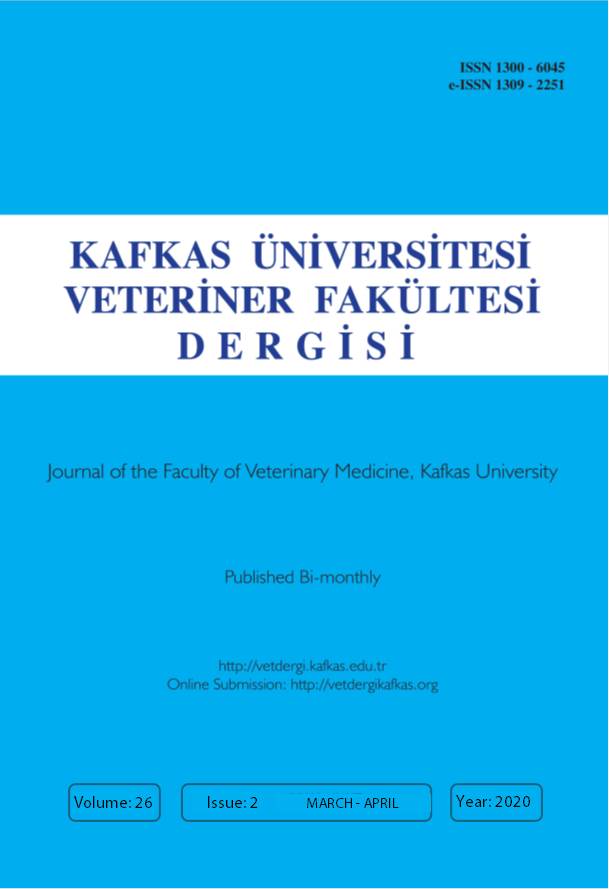
This journal is licensed under a Creative Commons Attribution-NonCommercial 4.0 International License
Kafkas Üniversitesi Veteriner Fakültesi Dergisi
2020 , Vol 26 , Issue 2
Effects of RNase III rncS Gene Deletion on Stress Response, Biofilm Formation and Virulence of Listeria monocytogenes
1College of Animal Science and Technology, Shihezi University, Shihezi, Xinjiang, 832003, CHINA2School of Biological Engineering, Central South University, Changsha, Hunan, 410012, CHINA
3State Key Laboratory for Sheep Genetic Improvement and Healthy Production, Xinjiang Academy of Agricultural and Reclamation Science/Shihezi University, Shihezi, Xinjiang, 832000, CHINA
4State Key Lab of Veterinary Etiological Biology, Lanzhou Veterinary Research Institute, Chinese Academy of Agricultural Sciences, Lanzhou, Gansu, 730046, CHINA DOI : 10.9775/kvfd.2019.22932 The ribonuclease III (RNase III) is an important enzyme system that regulates non-coding RNA (ncRNA) levels. In this study, LM-ΔrncS gene deletion strain was investigated by gene overlap extension PCR (SOE-PCR) and homologous recombination techniques. The environmental stress response, biofilm formation and virulence were determined and compared between the deletion strain LM-ΔrncS and the parental strain LM EGD-e. When compared with LM EGD-e, the adaptability of LM-ΔrncS was significantly reduced (P<0.05) under the stress of 30°C/42°C, pH 9, 5% NaCl, 3.8% ethanol and 0.1% H2O2. Biofilm formation ability of LM-ΔrncS was significantly lower (P<0.05) than that of LM EGD-e. In LM-ΔrncS, the transcription levels of ncRNA SreA and SbrA genes were significantly decreased (P<0.05). The adhesion rate and invasion rate of LM-ΔrncS in RAW264.7 cells were significantly lower (P<0.01) than those of LM EGD-e, and the survival and proliferation of LM-ΔrncS in RAW264.7 cells were also significantly decreased (P<0.05). Moreover, the transcription levels of InlA, hly, prfA and SigmaB gene were significantly lower (P<0.05) than those of LM EGD-e. LD50 of LD-ΔrncS in BALB/c mice was increased by 1.49 logarithmic orders, and the survival time of the mice was significantly prolonged when compared with LM EGD-e. In addition, the bacterial load in the liver and spleen was markedly decreased, and its pathological damage was also reduced. This study confirmed that RNase III RncS is involved in the regulation of environmental stress response, biofilm formation and virulence in LMd. Keywords : Listeria monocytogenes, RNase III rncS, Environmental stress response, Biofilm, Virulence










